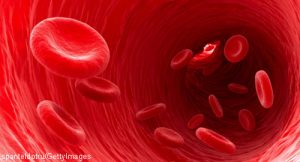 Patients with systemic lupus erythematosus (SLE) have a wide spectrum of disease activity, the mechanism of which is poorly understood. In an attempt to better characterize the molecular response that underlies pathology, researchers have identified blood transcriptional correlates of the clinical manifestations of disease. Although such approaches have yielded insights into the pathophysiology, a huge gap in our understanding of the molecules that contribute to disease activity remains. Recently, however, researchers have created a protocol for personalized immunomonitoring that reveals some of the molecular subtleties of lupus. The approach may also allow for improved SLE trial designs, as well as the implementation of tailored therapies in genetically and clinically complex autoimmune diseases.
Patients with systemic lupus erythematosus (SLE) have a wide spectrum of disease activity, the mechanism of which is poorly understood. In an attempt to better characterize the molecular response that underlies pathology, researchers have identified blood transcriptional correlates of the clinical manifestations of disease. Although such approaches have yielded insights into the pathophysiology, a huge gap in our understanding of the molecules that contribute to disease activity remains. Recently, however, researchers have created a protocol for personalized immunomonitoring that reveals some of the molecular subtleties of lupus. The approach may also allow for improved SLE trial designs, as well as the implementation of tailored therapies in genetically and clinically complex autoimmune diseases.
Romain Banchereau, PhD, postdoctoral fellow at the Baylor Institute for Immunology Research in Dallas, and colleagues published their analysis of pediatric patients with SLE in the April 2016 issue of Cell. They collected clinical data and documented blood transcriptional profiles from 158 patients for up to 1,412 days. Their hope was to identify immune pathways that are associated with changes in clinical features of SLE. The investigators first established a global SLE signature by comparing the patient samples with healthy controls. The SLE modular fingerprint revealed that SLE was characterized by overexpression of IFN response, neutrophil, inflammation, cell cycle, erythropoiesis and histone modules. The researchers then investigated how the SLE signature changed with disease activity (DA). When they compared DA3 (SLE Disease Activity Index > 7) with DA1 (SLE Disease Activity Index: 0–2), they found that plasmablast signatures were the most robust biomarker of SLE DA across independent datasets.
From there, they created a molecular classification system that stratified patients into seven major groups based on molecular correlates. These seven groups were also supported by patient genotypes. They found, for example, that neutrophil transcripts were enriched in patients with active renal disease. Moreover, they identified neutrophil-related signatures that were associated with progression to active nephritis.
The team hypothesized that such disease stratification may improve the outcome of clinical trials in SLE and possibly lead to a personalized approach to the treatment of lupus. They note that clinical research in SLE has been so slow that, in the past 50 years, the U.S. Food and Drug Administration (FDA) has approved only one drug for the treatment of SLE.
“By highlighting the spectrum of individual correlates of DA over time, our approach provides a rationale for the failure of clinical trials in SLE and an opportunity for the development of personalized therapies,” write the authors in their discussion. “Indeed, prevalent signatures that correlated with DA at the cohort level, such as IFN or plasmablast, failed to do so at the individual level in two-thirds of patients.” Their hope is, therefore, that their reveal of the molecular heterogeneity of SLE can pave the way towards identifying biomarkers that can predict occurrence and frequency of flares.
